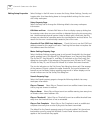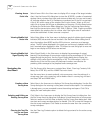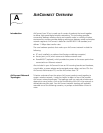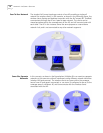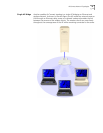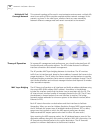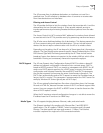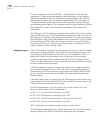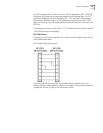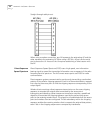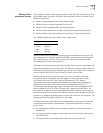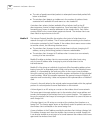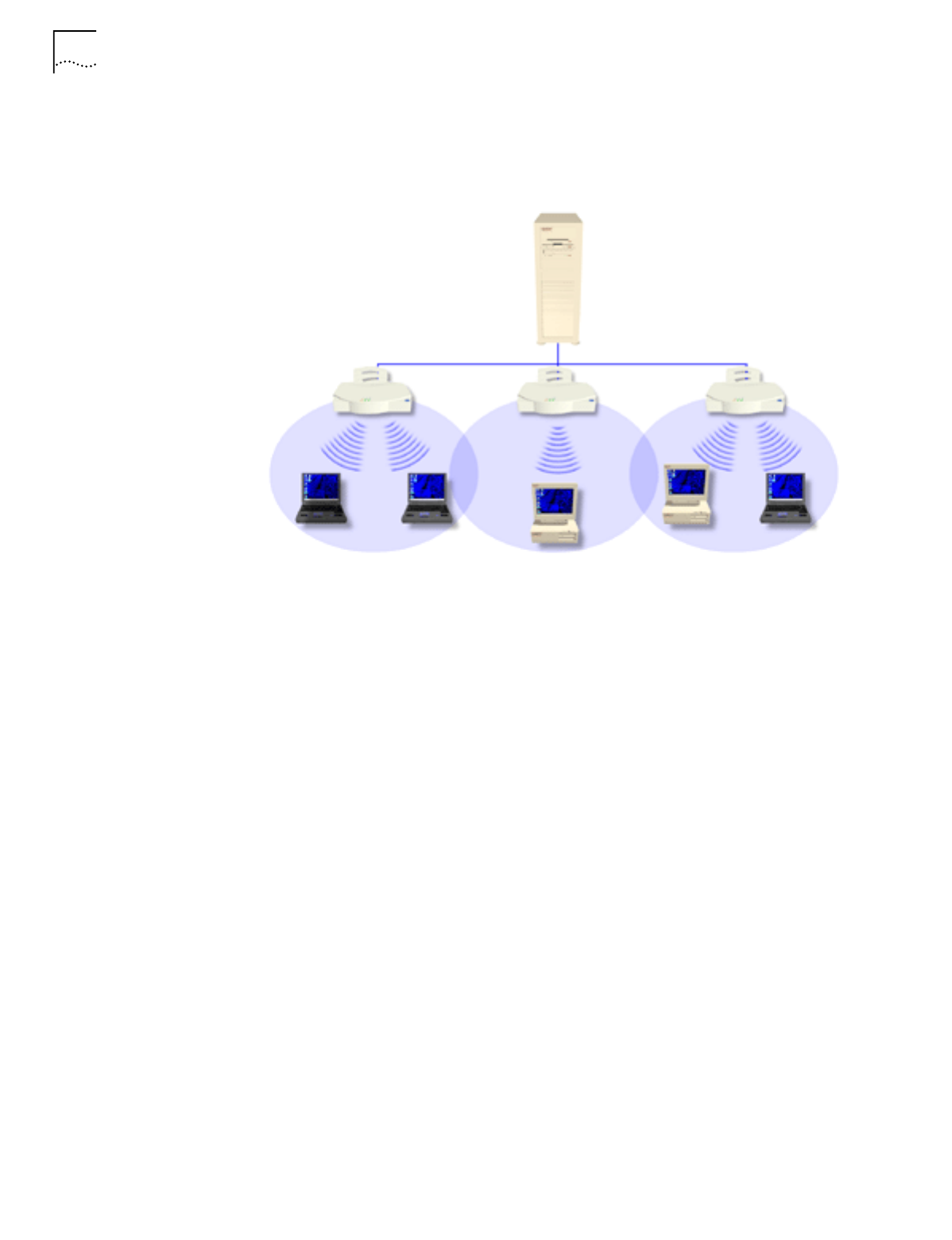
20 A
PPENDIX
A: A
IR
C
ONNECT
O
VERVIEW
Multiple-AP Full
Coverage Network
This network topology will be used in most enterprise environments: multiple APs
wired to an existing LAN to provide complete wireless network coverage. In this
scenario, as shown in the next figure, wireless clients can roam seamlessly
between different coverage areas and remain connected to the network.
Theory of Operation
To improve AP management and performance, you should understand basic AP
functionality and configuration options. The AP includes features for different
interface connections and network management.
The AP provides
MAC layer bridging
between its interfaces. The AP monitors
traffic from its interfaces and, based on frame address, forwards the frames to the
proper destination. The AP tracks the frames sources and destinations to provide
intelligent bridging as wireless clients roam or network topologies change. The AP
also handles broadcast and multicast message initiations and responds to wireless
client association requests.
MAC Layer Bridging
The AP listens to all packets on all interfaces and builds an address database using
the unique IEEE 48-bit address (MAC address). An address in the database
includes the interface media that the device uses to associates with the AP. (The
AP internal stack interface handles all messages directed to the AP.) The AP uses
the database to forward packets from one interface to another. The bridge
forwards packets addressed to unknown systems to the default interface (either
Ethernet or PPP).
Each AP stores information on destinations and their interfaces to facilitate
forwarding
. When you send an
Address Resolution Protocol
(ARP) request packet,
the AP forwards the request over all enabled interfaces (Ethernet, PPP, or radio),
except over the interface on which the ARP request packet was received.
(Radio-received ARP request packets echo back to other APs over radio.)
Upon receiving the ARP response packet, the AP database keeps a record of the
destination address along with the receiving interface. With this information, the
AP forwards any directed packet to the correct destination. The AP forwards
packets for unknown destinations to the Ethernet interface.



